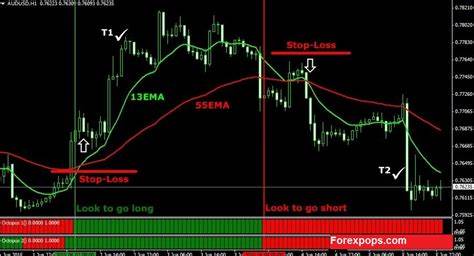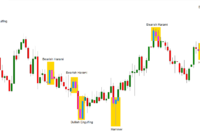Forex swing trading is a popular strategy among traders looking to capitalize on price movements over a few days to weeks. Understanding the best forex swing trading strategies can help you navigate the market effectively, optimize your trades, and ultimately increase your profitability. This guide will delve into various strategies, tools, and techniques to help you become a successful swing trader in the forex market.
What is Forex Swing Trading?
Defining Swing Trading
Swing trading is a trading style that focuses on capturing short to medium-term price movements in the forex market. Unlike day trading, where positions are held for a few minutes to hours, swing traders typically hold positions for several days or even weeks. This approach allows traders to take advantage of price swings created by market fluctuations.
Why Choose Swing Trading?
- Less Time Intensive: Swing trading requires less constant monitoring than day trading, making it suitable for individuals with full-time jobs.
- Potential for Higher Returns: By holding positions longer, swing traders can target larger price moves compared to quick trades.
- Flexibility: Swing traders can use both technical and fundamental analysis to make informed decisions, allowing for diverse trading approaches.
Key Principles of Swing Trading
Technical Analysis
Technical analysis is fundamental to swing trading strategies. It involves analyzing price charts and using indicators to forecast future price movements. Key aspects include:
- Chart Patterns: Patterns such as head and shoulders, triangles, and flags can indicate potential price reversals or continuations.
- Candlestick Patterns: Recognizing formations like doji or engulfing patterns can provide insights into market sentiment.
- Support and Resistance Levels: Identifying these levels helps traders understand where prices are likely to reverse or break out.
Fundamental Analysis
While swing traders primarily rely on technical analysis, fundamental analysis plays a crucial role in understanding the broader market context. This includes:
- Economic Indicators: Key metrics such as GDP growth, unemployment rates, and inflation can influence currency values.
- Central Bank Policies: Interest rate decisions and monetary policy statements can lead to significant price movements.
- Geopolitical Events: Political stability and global events can affect market sentiment and currency strength.
Risk Management
Effective risk management is vital in swing trading. This includes:
- Position Sizing: Determine how much of your capital to risk on each trade, typically no more than 1-2% of your total account balance.
- Stop-Loss Orders: Use stop-loss orders to limit potential losses and protect your capital.
- Risk-to-Reward Ratio: Aim for a risk-to-reward ratio of at least 1:2, meaning for every dollar risked, you aim to make two.
Best Forex Swing Trading Strategies
Trend Following Strategy
Understanding Trend Following
The trend following strategy involves identifying the direction of the market trend and entering trades in that direction. This strategy relies on the idea that prices tend to move in sustained trends.
Implementation Steps
- Identify the Trend: Use moving averages (e.g., the 50-day or 200-day) to determine the trend direction.
- Entry Point: Enter a trade when the price pulls back to a support level within an uptrend or a resistance level in a downtrend.
- Exit Point: Set profit targets based on previous resistance or support levels.
Tools and Indicators
- Moving Averages: Help identify the direction and strength of the trend.
- Relative Strength Index (RSI): Indicates overbought or oversold conditions.
Counter-Trend Strategy
Understanding Counter-Trend Trading
The counter-trend strategy involves trading against the prevailing market trend. This strategy seeks to capitalize on price corrections or reversals.
Implementation Steps
- Identify Overbought/Oversold Conditions: Use indicators like the RSI or Stochastic Oscillator to identify extreme conditions.
- Entry Point: Look for reversal patterns, such as double tops or bottoms, to enter a trade.
- Exit Point: Set targets based on previous highs or lows and use stop-loss orders to manage risk.
Tools and Indicators
- RSI: A value above 70 suggests overbought conditions, while below 30 indicates oversold conditions.
- Candlestick Patterns: Look for reversal patterns that signal a potential trend change.
Breakout Strategy
Understanding Breakout Trading
The breakout strategy focuses on entering trades when the price breaks through significant support or resistance levels. This strategy aims to capture momentum as the price moves in the direction of the breakout.
Implementation Steps
- Identify Key Levels: Draw support and resistance lines on your charts to identify key breakout points.
- Entry Point: Enter a trade when the price closes above resistance or below support with increased volume.
- Exit Point: Set profit targets based on the height of the previous price range before the breakout.
Tools and Indicators
- Volume Indicators: Increased volume during a breakout can confirm the strength of the move.
- Bollinger Bands: Can help identify potential breakout points.
Moving Average Convergence Divergence (MACD) Strategy
Understanding MACD
The MACD is a popular momentum indicator used in swing trading. It helps traders identify potential buy and sell signals based on the convergence and divergence of moving averages.
Implementation Steps
- Set Up the MACD: Use the standard settings of 12, 26, and 9 for the MACD line, signal line, and histogram.
- Entry Point: Look for MACD crossovers where the MACD line crosses above the signal line (buy) or below (sell).
- Exit Point: Set profit targets based on support and resistance levels or use the MACD histogram for exit signals.
Tools and Indicators
- MACD: Provides signals based on momentum shifts.
- Trend Lines: Can be used in conjunction with MACD signals for confirmation.
Fibonacci Retracement Strategy
Understanding Fibonacci Retracement
The Fibonacci retracement strategy uses key Fibonacci levels to identify potential reversal points during a pullback in a trend.
Implementation Steps
- Identify the Trend: Determine whether you are in an uptrend or downtrend.
- Draw Fibonacci Levels: Use the Fibonacci tool to identify key retracement levels (23.6%, 38.2%, 50%, 61.8%).
- Entry Point: Look for price reactions at these levels, entering trades when price shows signs of reversing.
- Exit Point: Set targets at previous highs or lows, adjusting stop-loss orders as necessary.
Tools and Indicators
- Fibonacci Tool: Most trading platforms include this tool for easy setup.
- Candlestick Patterns: Watch for reversal patterns at Fibonacci levels.
Tips for Successful Swing Trading
Stay Informed
Keeping up with economic news and global events is vital. Economic calendars can help you track important announcements that may impact currency pairs.
Keep a Trading Journal
Maintaining a trading journal allows you to track your trades, analyze your performance, and learn from your mistakes. Documenting your strategies and outcomes will help refine your approach over time.
Practice with a Demo Account
Before committing real capital, practice your strategies on a demo account. This allows you to gain experience and confidence without financial risk.
Be Patient
Swing trading requires patience. Wait for high-probability setups and avoid the temptation to enter trades prematurely.
Conclusion
Mastering the best forex swing trading strategies can open the door to profitable trading in the forex market. By understanding various approaches, such as trend following, counter-trend trading, breakout strategies, and using indicators like MACD and Fibonacci retracement, you can enhance your trading skills and increase your chances of success.




